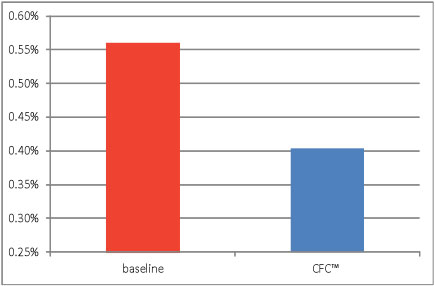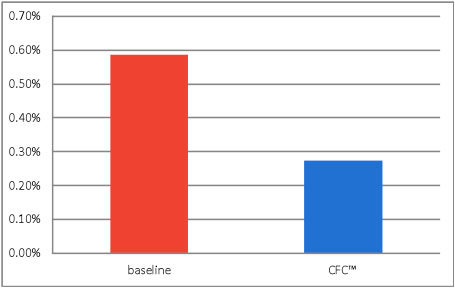Biodiesel production begins by reacting triglycerides with an alcohol and a catalyst. The products of this reaction are mainly biodiesel and glycerin. The catalyst will form soap and eventually salt due to neutralization in the downstream process.
In our process the power of cavitation creates micro droplets which form an emulsion. Precise process control ensures a tightly controlled, repeatable droplet size distribution. Superior mixing and high droplet surface area allow for a fast and efficient reaction, which increases the catalyst efficiency.
The upcoming tighter specification is asking for lower monoglyceride contents in the end product biodiesel. The most efficient way to achieve a lower monoglyceride content is to push the reaction with a higher catalyst dosage. We offer an opportunity to lower monoglycerides with no additional catalyst consumption.
Very little pipefitting is needed because the CFC reactor will be connected to the inlet of the first reaction column without interruption to the rest of the process. These convenient installation features eliminate the need for a shutdown to facilitate steam purging. The installation time is approximately two days and the actual shut down to connect the CFC unit and start up can be as short as two hours.
This retrofit solution reduces operation costs with no requirement for additional space as the footprint is less than 1.5m x 2.5m for a 200 k MT/a plant.
Because the CFC™ chamber has no moving parts the maintenance on the reactor is equivalent to that of a centrifugal pump.
In our process, the power of cavitation creates micro droplets which form an emulsion. Precise process control ensures a tightly regulated, repeatable droplet size distribution. Superior mixing and high droplet surface area allow for a near instantaneous and efficient reaction, which increases the catalyst efficiency.
Currently tighter specification for lower monoglyceride contents can be achieved with higher catalyst consumption.
We offer an opportunity to lower monoglycerides with no additional catalyst consumption.
Example of catalyst reduction while maintaining same Mono

Example of Mono-reduction while reducing catalyst by 15%
